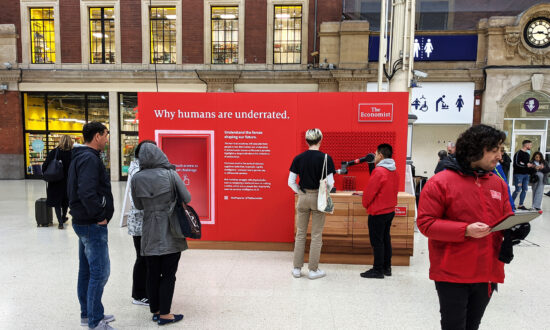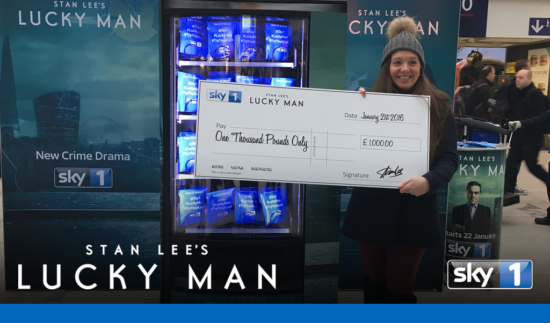
29th December 2018 by Jason Vincent
The future of Social Vending in 2019
2018 has been a great year for social vending. If we look back, Aeguana pioneered social vending technology in collaboration with a production agency partner in 2016, initially focusing on Twitter as a channel to trigger our vending machines. Since then we’ve continued to advance the technology, taking on ever more challenging briefs that look to push the boundary of what’s possible in terms of digital and experiential consumer engagement.
From launching the product as an entirely new offering to the market, we’ve seen numerous agencies and startups copy the concept and offer it to brands as a way to engage customers. Whilst I wouldn’t go as far as to say that social vending has become as ubiquitous as photo booths, it’s definitely moved in that direction over the past couple of years.
As the saying goes…
“inspiration makes a copy, creativity makes something completely new”
And we’re makers, builders, innovators. But ultimately, we’re passionate about creativity.
Developing and using new technology is always fun, but ultimately it needs to tie in with a wider campaign and deliver value. That’s what we’re ultimately after, brief after brief, project after project. In this post, we’ve outlined some ideas about how we think value will be best delivered through social vending campaigns in the year ahead, along with looking back at how the technology has matured.
Currently we’ve been focused on delivering campaigns with the following social channels to trigger our intelligent vending machines:
- Twitter – our launch channel, whereby we can detect posts by hashtags or user mentions, and then extend the functionality to perform a variety of checks on these posts. Sometimes we look at what the consumer has said – enabling us to interpret their message, looking for keywords or correct answers to questions. We’ve extended this to perform sentiment analysis, such as determining whether they were ‘naughty’ or ‘nice’ based on their Twitter timeline. The challenge we’ve found with Twitter however is that the type of individuals using and engaging in the platform have changed over time. It’s used a lot more by disgruntled customers to moan at brands and businesses, along with celebrities looking to make a statement, than by consumers looking to explore new brands, ideas or even make new connections. We believe this trend is going to continue, and Twitter is likely to play an ever less important role in achieving social media exposure in the year ahead.
- Instagram – our second channel introduced, which enabled us to encourage the creation of more visual content by customers. This has been incredibly popular. Nearly every person (and often quite literally their dog) has an Instagram account these days, and it’s far easier to digest what you’re friends have been up to by scrolling through a series of photos, than it is by reading hundreds of 140 character messages (or however long they are these days). Despite the data / privacy challenges that cropped up with Facebook in the past year, we’ve continued to work with Instagram in order to be able to deliver this as a service. We’re confident this is going to play a bigger part in social campaigns particular for B2C brands looking to increase their social reach in the year ahead.
- Facebook – this has been an interesting option, and often the platform of choice for running competitions that may tie in with social vending in some way. For instance, brands may run a competition on their Facebook page asking customers to answer a question correctly, post their favourite ‘something’ or otherwise engage with a post, which will trigger samples and/or rewards from our vending machines. It’s an interesting option and particularly applicable for competitions, but has limited social reach as these posts can not be on customers’ individual facebook timelines – instead they’re limited to brand pages. This means the incremental exposure of each post is limited. However, that doesn’t make it pointless, far from it. These campaigns can be tied in with encouraging customers to follow a brand’s page, which has immense value in it’s own right. Facebook will continue to be a useful channel for brands, perhaps less so those looking to launch new products and achieve instant social exposure, but important nonetheless for long term campaigns and achieving brand exposure. Having overcome the worst of the data/privacy challenges in 2018, we’re confident this will be a viable option for the year ahead.
These are the main social channels we’ve using to trigger our social vending machines in 2018. In some cases, we’ve been fortunate to be truly challenged by some clients, and have tied this in with far more technically complex (read fun) ideas. I’ve listed some of these below, and we do believe (and secretly hope) we’re likely to see more of these types of campaigns in the future:
- Emotion sensing – the ability to recognise the emotion(s) a customer is feeling and act accordingly. In the context of social vending, this could involve dispensing one reward if their beaming with joy, or another if they happen to be a bit down that day. A great example of this is the campaign run for Just Eat whereby customers were awarded different food cards to enjoy a free meal depending on their emotion. Feeling sad? Have a chocolatey crepe. Feeling angry? Calm down with a soothing meal. We’ve even worked with a bank to reward their customers for smiling during a religious festival. This can be applied to individuals or to crowds – the opportunities for experiential campaigns really are endless.
- Facial recognition and facial feature detection – estimating age, identifying gender and being able to identify a person across different cameras and screens enables us to do all sorts of things. At a basic (I won’t say boring) level, this is great marketing data for advertisers, and can be used for customer demographic profiling in different locations. However, there is so much more we can do. Identify returning customers in an on-screen game, enabling them to pick up where they left off? Attribute a character to a person (eg: one person is a witch, the other a sorcerer) and enable them to keep these ‘roles’ throughout various interactions around an event. There’s so much that can be done, and we’re excited by the opportunity to explore this technology further and apply it both within a vending context and in other areas surrounding events and experiential marketing.
- Speech detection – our case study for Yakult is a great example of what can be done by thinking outside the box (you can see this here: https://aeguana.com/case-studies/yakult-aeguana-case-study). By tying the marketing activity to their Japanese heritage, Yakult have encouraged customers to learn certain Japanese words on our high tech vending machine. By correctly pronouncing the words they can receive a free little bottle of Yakult of their choice. However, get it wrong and you might find yourself disappointed and lacking your daily dose of billions of healthy bacteria!
But the most exciting opportunities are in combining the technology above to achieve a wider campaign goal. Engaging customers to take part in something fun (like emotion sensing, or learning a new word in a foreign language) but then enabling them to share this experience on social media. For instance, generating a branded gif of this experience – watching them attempt to pronounce words they’ve never said before – and then giving consumers the chance to share this on their own social channels.
Perhaps equally important is the actual content being created. Tagging a hashtag on Twitter or Instagram to trigger a reward from a social vending machine is fun and still innovative – it’s still definitely a better solution for sampling than simply asking promo staff to hand out samples. Why? Because it gives you data. You know who took part, and sometimes you can capture information regarding their thoughts on the brand, the product, or the event, there and then. However, the time is approaching to take this a step further.
We need to encourage clients – be it agencies or brands directly – to run campaigns that will guide consumers to generate more engaging content. Why simply tag something when you can put up valuable content? Instead of running a Christmas campaign simply tagging the brand, why not ask customers what they love most about Christmas? Or perhaps ask them to tag someone who means something to them, alongside the #youmatter campaign hashtag to receive a special gift to give to that special someone?
This is the type of content that matters. It generates shares, retweets, and likes. It should tie in with the campaign’s objectives, and hopefully with the brand’s underlying values. And it creates valuable content that will survive the test of time online.
At Aeguana, we’re not just passionate about coming up with world-leading experiential marketing technology. We’re more passionate about making campaigns a success. Delivering on the metrics that count. Creating moments people love, moments people talk about. And we genuinely think there has never been a better time to do so.
(If you have an idea and would like to discuss it with us, we’d love to hear from you – reach out to us here: https://aeguana.com/contact-us)




